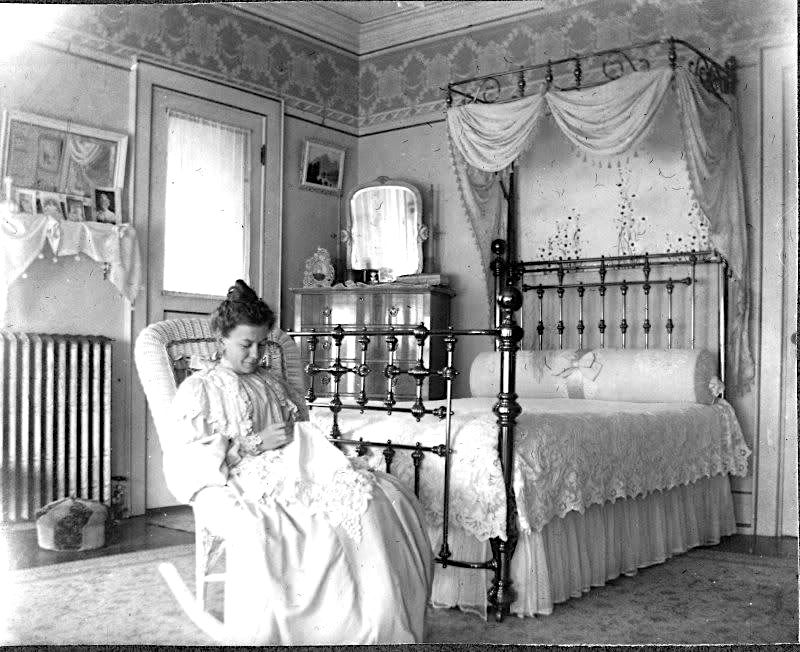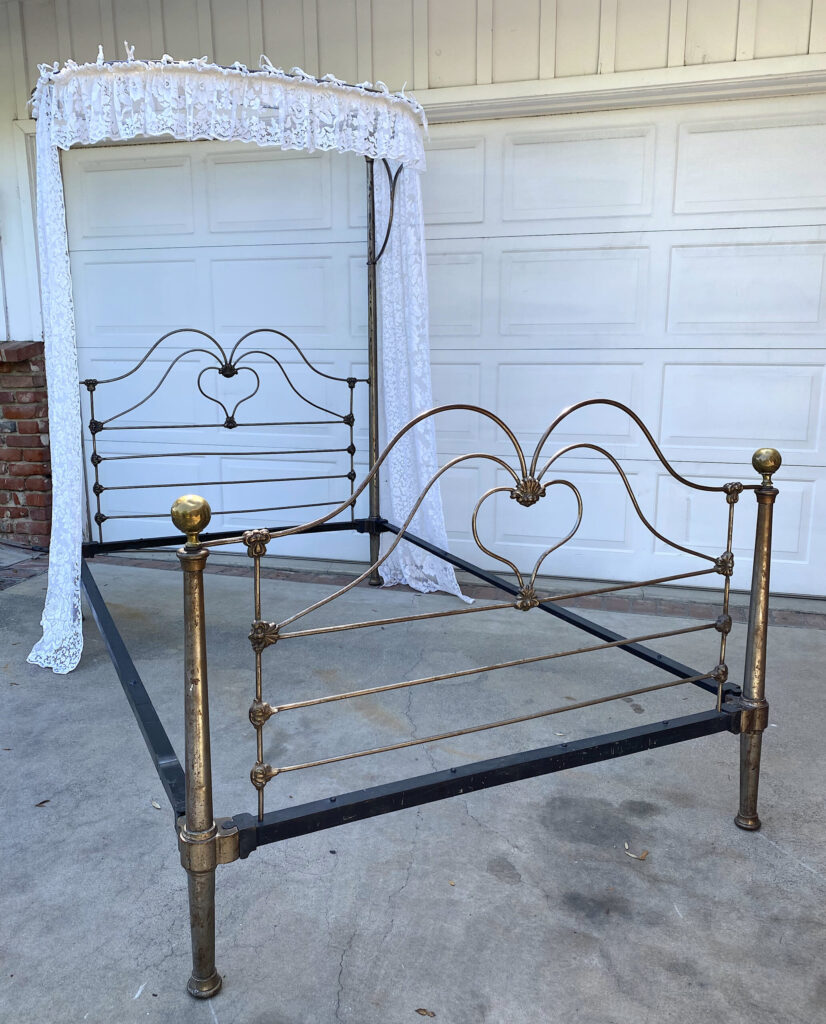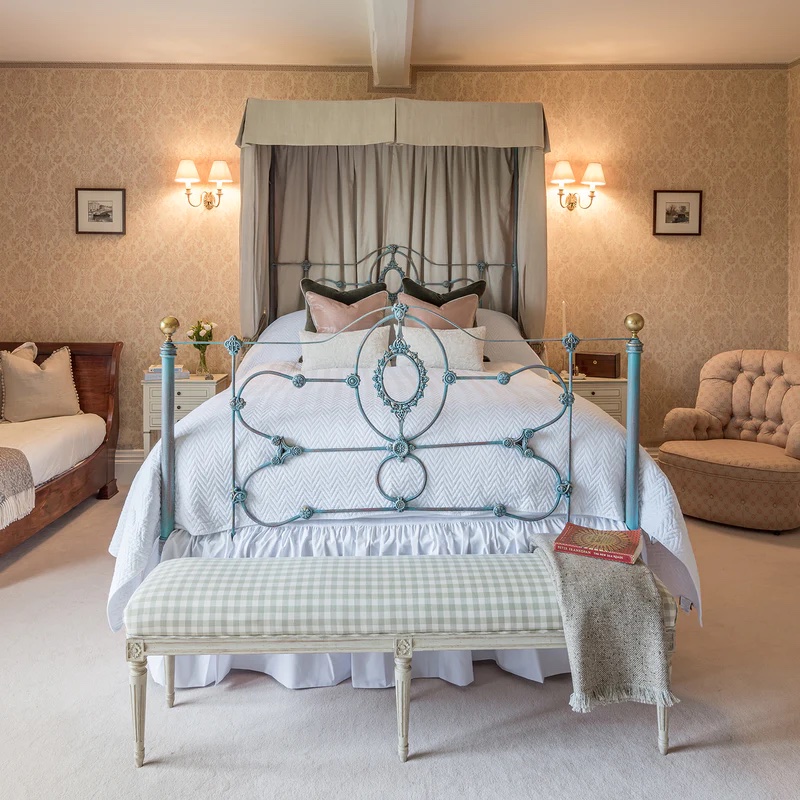Half-tester iron beds, popular in the 1800s, served both functional and aesthetic purposes. These beds typically featured an ornate iron headboard, often adorned with intricate designs or decorative elements. The name “half-tester” comes from the fact that these beds had a canopy or tester that covered only half of the bed, usually extending from the headboard.

The primary purposes of half-tester iron beds in the 1800s were:
Canopy Support: The half-tester canopy served both practical and decorative functions. It provided a framework for hanging curtains or drapes, offering some privacy and warmth for the person sleeping in the bed. The curtains could be drawn to keep out drafts or provide a sense of enclosure, contributing to a more intimate and comfortable sleeping space.
Practical Protection: The half canopy top, which not only served to provide privacy and enhance the warmth generated by the occupants of the bed………But more importantly served to protect the people in the bed from faulty ceilings or roofing materials that could fall down on those in the bed. When ceilings were simple thatched roofs, rodent dropping etc. were a common issue that had to be dealt with. The half tester was a practical way to insure against everything a person in the bed was subject to.

Aesthetic Appeal: The elaborate designs on the iron headboard and the canopy frame were often intricate and decorative. These beds were a symbol of status and wealth, as the craftsmanship and materials used in their construction were typically of high quality. The aesthetic appeal of the bed contributed to the overall ambiance of the bedroom, showcasing the owner’s taste and refinement.
Iron beds with half testers were a great example of “necessity being the mother of invention”. But as time went on, the need for half testers diminished and traditional antique iron beds became the norm.







